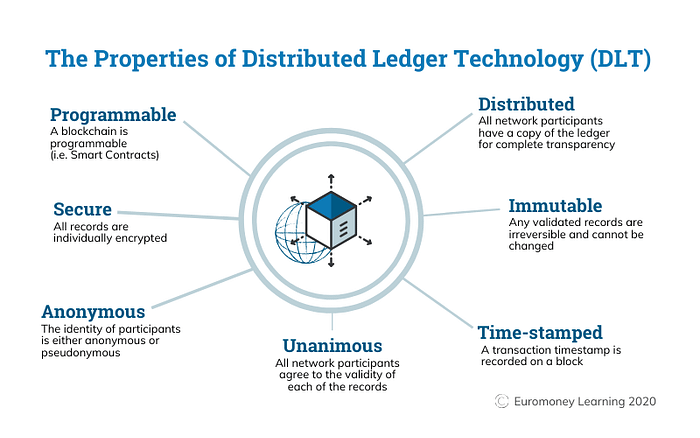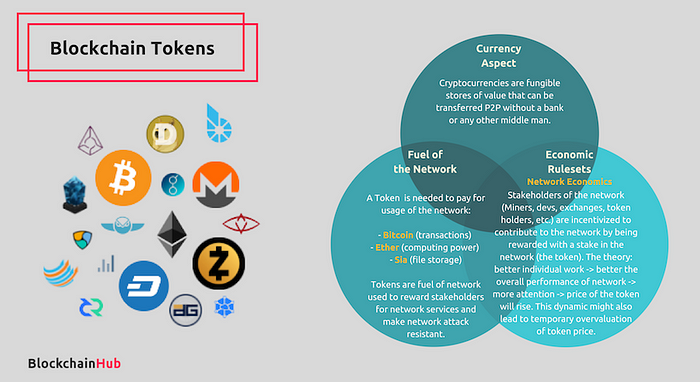Not Just Token Tokens
I recently watched some of the recent Congressional hearings on cryptocurrency, and, boy, if there’s anything funnier than watching experts try to educate most members of Congress on anything crypto-related, it’s probably me trying to explain it. I don’t own any digital assets, still don’t see the point of NFTs, and am not going to buy any real estate in the metaverse.
All that being said, there’s something about Web3 that fascinates me. Knowledgeable people are talking about Web3 “reinventing the internet,” “democratizing” it, giving people more ownership of/control over what they do on it. It’s a counterbalance to the how the internet — both the traffic and the infrastructure — has increasingly grown dominated by a few very large firms, such as Google, Facebook, or Amazon.
As the Web3 Foundation declares, Web3 is an internet where:
- Users own their own data, not corporations
- Global digital transactions are secure
- Online exchanges of information and value are decentralized
All that sounds very intriguing to me, especially as someone who has dim views of how healthcare likes to silo information, has placed too little value on patient ownership of their own data, and is rushing to centralize.

If I’ve got this right, the heart of Web3 is the concept of distributed ledgers — a.k.a., blockchain. Information is not stored in one place, controlled by one entity, but across these distributed ledgers. Activity — transactions, changes to the source information, etc. — updates the blockchain, preserving the history and verifying the activity across the distributed ledgers. Someone wanting to change or use your information without your permission faces a large challenge because of its distributed nature.
On the distributed ledgers, you can do transactions (e.g., buy/sell), use “smart contracts,” participate in social networks, and many other interesting activities. If trying to do anything quickly across a distributed network sounds daunting, Bloomberg reported:
Operating through a distributed network can be clunky, but the user experience is getting better. “It’s still early, but it’s been transformed in the last six months,” says Jonathan Dotan, founding director of the Starling Lab.
To assist, there’s a related concept of a “distributed app,” which is, I suppose, to Web3 as apps have been to Web 2.0. There’s even a “dapp store” called DappRadar that claims to allow you to “discover, track & trade everything DeFi, NFI and Gaming.”
We are already seeing DAOs — decentralized autonomous organizations — to help create /run Web3. “I think DAOs will be as ubiquitous as companies, clubs, nonprofits, and different kinds of ‘official’ organizations today,” Maria Shen, a partner at venture capital firm Electric Capital, told Bloomberg.
There is an explosion of funding in blockchain-based startups; CB Insights reports $15b in 2021, up 384% from 2020. In The Wall Street Journal, Christopher Mims notes:
Almost every company with “Web3” or “blockchain” in its pitch deck describes its mission as a user-centered quest to empower — and just as often, enrich — its users, making them owners and investors as much as customers.
That. Is. Intriguing.

We can’t get away from Web3 without discussing tokens, which many associate with digital currency like bitcoin. That’s not entirely incorrect, but not quite right either. Digital currencies are associated with specific platforms — e.g., bitcoin and Ethereum run on different platforms — but tokens are digital assets that transcend platform.
Cryptopedia says: “Tokens — which can also be referred to as crypto tokens — are units of value that blockchain-based organizations or projects develop on top of existing blockchain networks.” It goes on to clarify:
· “Typically, crypto tokens are programmable, permissionless, trustless, and transparent.
· While crypto tokens, like cryptocurrency, can hold value and be exchanged, they can also be designed to represent physical assets or more traditional digital assets, or a certain utility or service.”
Tokens can be used, for example, like “voting shares” that help govern dapps or other structures.
This leads to something that Mr. Mims also discussed as one of the “inspired weirdness that is Web3”:
If money can become code, then money can be way more than a means of exchange; it can also do anything that other software can do.
This core insight, a sort of E = mc equivalence between money and software, is why true believers in Web3 think it could have a huge impact. Suddenly every activity humans engage in, from buying and selling a house to liking a post on social media, can be made part of a token-based financial system of a scale and complexity that makes today’s look like an antique.
I love the “E = mc² equivalence between money and software;” no wonder people are excited about Web3.
Not everyone is a fan. For one thing, generating some blockchain takes tremendous computing power, which has a host of environmental impacts. For another, it can be a way for evading regulation, which could be a concern for fields like finance or healthcare.
Even more troubling, as Cornell professor James Grimmelmann told NPR:
Web3 is vaporware… It doesn’t make any sense. The vision says the problem with the internet is too many centralized intermediaries. Instead of having lots of different applications and sites, we’ll put it all on blockchains, which puts it all in one place.
Web3 has to be bigger than blockchain.
I don’t know what a Web3 for healthcare would be, but I have some ideas. Of course, the idea that we own and control our health records, storing them on blockchain and giving permission for them to be viewed/added to, should be tempting to anyone who has had to fight or access to their own records. That’d be a necessary but not sufficient component of a healthcare Web3.

Imagine, if you will, a future where anytime you interact with the healthcare system, that interaction is not only stored in a blockchain record that you control, but also earn tokens for that interaction. Imagine all the data from your fitness or other trackers also going into that blockchain record, and earning more tokens. Imagine all those tokens giving you voting rights in the governance of that healthcare system.
We’re not at Web3, and we’re not going to be there anytime soon. Moreover, experts predict, it’s less about Web3 supplanting Web 2.0 as becoming incorporated into it. Still, as Esther Crawford, a project manager who is helping Twitter orient towards Web3, told NPR: “For a long time, Web3 has been very theoretical. But now there is a surge of momentum to build.” Ignore it at your own risk
I can’t wait to see who is going to build what Web3 for healthcare.
